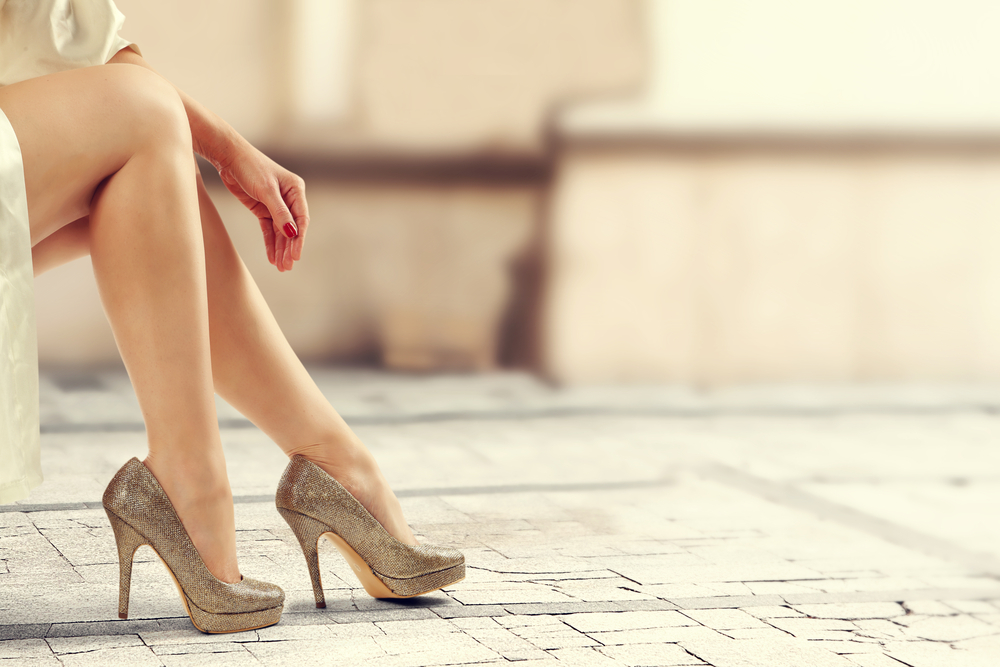Stilettos and Foot Health

Trying to perfect a look involves going through multiple outfits, jewelry, and shoe choices until we select what works best. Shoe choice can be particularly important depending on what you’re intending to get out of your look. Flats are practical and ensure you can walk comfortably for long periods of time and wedges help give you a little boost while remaining stable and easy to walk in. Stilettos also have a reputation. They are iconic when it comes to cultivating an eye-catching look, but the truth you need to know is that stilettos can make the phrase “beauty hurts” quite literal. The dramatic look comes with a few drawbacks to the health of your feet if you’re not careful. With that in mind, we’re going to look into the potential impact stilettos can have on your feet if you’re not careful.
Less Of A Stretch
The high, thin profile of stiletto heels is eye-catching, yes, but it has a distinct cost to your feet. One of the most potentially difficult problems over the long term is that it can cause the shortening of the Achilles tendon. This tendon is crucial to your ability to move and use your foot properly. When barefoot or in flats, the tendon is naturally held at a particular amount of tension that allows for a functional and comfortable range of movement. Habitually wearing stilettos keeps your feet at such an angle that this tension is somewhat removed from the tendon. Over time, this causes it to shorten and causes issues when not wearing heels due to the natural level of tension no longer being “normal” to the tendon. Putting this level back on the tendon over time can lead it to return to normal, but it is just as likely to cause further problems.
Out Of Alignment
Another large issue regarding stiletto heels is that they don’t just put particular muscles groups at risk. They entirely change how we walk. Most people are familiar with the kind of walk women in heels follow as a necessity to remain balanced. The chest is pushed further forward as the back is forced at an angle. This helps maintain balance, yes, but it isn’t the natural curvature of the spine. Weight distribution changes are a result and this impacts the legs and feet. Knees begin to be placed under greater pressure while the feet have pressure fall on them unnaturally. Feet developed to have an even distribution of weight and force across the foot, but heels force more of the weight onto the toe of the foot. In turn, this can lead to corns and other painful developments in the area. The pointed walk can also lead to inflammation of the joint at the front of the foot as well.
What Do I Do?
Happily, all of these problems are related to wearing heels the majority of the time. You can avoid these problems by remembering you should be wearing sensible shoes most of the time and reserve heels for special occasions. This minimized use will keep your feet healthy. Additionally, heel size plays a large role in how fast and bad the foot problems you might experience can be. Stilettos are among the worst culprits due to their high profile. Lower, wider heels provide a more stable and even way of walking. Some doctors have also suggested that anyone who intends to wear heels for a few hours should take the time to stretch their legs both before and after wearing them to help your feet and legs deal with them more effectively.
Stilettos can be utterly gorgeous with the right outfit, but like all good things we have to remember not to overindulge. The potential foot problems from wearing heels, especially stilettos, too much can lead to long-term foot problems that will not only make it hard to enjoy heels, but hard to enjoy any shoe that hasn’t been picked out by a podiatrist. Live a healthy lifestyle by caring for your body by cultivating good habits at the same time you pamper your skin.

